What This Blog Post on Vibe Coding Security Covers
-
Vibe coding security refers to safeguarding the development process when AI tools assist in writing code, focusing on IDEs, code models, and deployment pipelines.
-
AI coding assistants can introduce hidden risks like unsafe code patterns, typosquatted packages, or plugin-based backdoors, requiring real-time monitoring and validation.
-
Core controls include dependency scanning in the IDE, plugin approval workflows, snippet validation, drift detection, and centralized audit logs.
-
Governance is enforced through ABAC/PBAC policies, which tie access and actions to roles, identities, and project sensitivity, aligning with secure SDLC best practices.
-
Knostic’s Kirin platform strengthens vibe coding security by scanning packages, enforcing plugin rules, managing drift, and logging decisions at every development stage.
What Is Vibe Coding Security?
Vibe coding security is the practice of securing development when AI assistants help write code. It covers integrated development environments (IDEs), the model, and the pipeline that ships code. It controls what packages and plugins can run. It checks AI-generated snippets before they land in code repositories. The system enforces auditability so security teams can trace who allowed what and why. It aligns with secure-software development lifecycle (SDLC) guidance, referencing frameworks such as the National Institute of Standards and Technology (NIST) SP 800-218 (Secure Software Development Framework), to keep controls active from development to deployment.
Why it Matters in AI/Coding Assistants
AI can suggest code that looks correct but hides risky patterns. Teams need guardrails to prevent unsafe calls and secrets from slipping into code commits. Supply-chain threats now target developers directly with malicious packages. These campaigns use typosquats and backdoors to get execution inside build paths. Governance in the IDE reduces these risks before pull requests. Modern guidance and threat reports show the problem is real and growing.
Key Threat Vectors
Malicious or vulnerable libraries can enter through a single import. Unsafe plugins and extensions can leak tokens or expand the attack surface. Unintended execution of code via assistant-triggered toolchains can occur if model-generated commands run without user validation. Generated snippets can carry indirect injection or unsafe defaults. Dependency and configuration drift let old or risky versions slip back in. These risks can emerge at multiple stages of the software lifecycle, pre-commit (during coding and review), within continuous integration/continuous delivery (CI/CD) pipelines, and even post-deployment, requiring continuous AI monitoring and layered controls. Each vector needs specific controls at the point of use.
Unique Vulnerabilities in Vibe Coding Environments
Chat-driven “vibe” coding collapses prompts, context windows, agents, and tool execution into a single surface where secrets, identity, and permissions blur. This creates inference-time and supply-chain attack paths that traditional approaches never modeled.
Malicious or Vulnerable Libraries
Attackers publish packages that mimic popular names and wait for typos. Developers pull them in and run post-install or runtime payloads. Backdoors in upstream components can also spread into images and builds.
America’s Cyber Defense Agency (CISA) highlights that the XZ Utils incident showed how trust can be abused at scale. Reports document typosquatting across major ecosystems in recent years. However, IDE-level checks reduce the chance of these packages ever executing.
Unsafe Plugins/Extensions in IDEs or Assistants
Plugins can access tokens, repositories, and local files. Most IDEs do not sandbox plugins by default, which means a single unsafe or overprivileged extension can read sensitive configuration files or system paths. A single plugin flaw can leak credentials to third parties. Recent disclosures highlight risks in common IDE ecosystems.
It is also essential to distinguish between unintentional vibe coding security vulnerabilities arising from poor coding practices, and deliberately malicious plugins that seek to exfiltrate data or install backdoors. Each requires distinct controls. These include code review and signing for legitimate plugins, strict allow-listing, and behavioral and plugin monitoring for potential malware. Teams should treat plugins like code and apply policy. Only vetted extensions should load in the developer’s session. Monitoring must flag new or changed plugins immediately.
Indirect Code Injection Via Generated Snippets
AI can output code that embeds unsafe patterns without obvious signs. Prompt injection and output handling weaknesses are well known. Unsanitized snippets can enable command or structured query language (SQL) injection later. Teams must validate assistant output like untrusted input. Policies should block dangerous application programming interfaces (APIs) and require safe wrappers. The Open Worldwide Application Security Project (OWASP)’s guidance for large language model (LLM) applications maps these issues to concrete controls.
Configuration Drift, SCM Dependency Changes, and Environment Misuse
Environments change faster than policies when teams move quickly. A repo can pin safe versions one day and drift the next. Build images can inherit risky libraries from upstream base layers. Supply chain management (SCM) updates can reintroduce deprecated dependencies during merges. This means that drift alerts and policy checks are needed at every step. High-profile incidents show how subtle shifts can hide serious risk.
Core Controls & Best Practices for Vibe Coding Security
Secure the AI-assisted software development life cycle from end-to-end by scanning dependencies on add, controlling plugins, enforcing guardrails on LLM-generated code, detecting environment drift, and centralizing audit from IDE through deploy.
Dependency Scanning
Scan dependencies as they are added in the IDE. Block known common vulnerabilities and exposures (CVEs) and suspicious packages before the first run. Re-scan at build and deploy to catch late changes. Tie findings to decision trails for audit and review. Use allow-lists for critical components and repos. Align the flow with secure-SDLC practices to avoid blind spots.
Plugin & Extension Monitoring and Blocking
Maintain an approved list of extensions per IDE and role. Alert, and optionally block, if a new plugin is installed or updated outside policy. Disable high-risk plugins until they pass review. Record who approved exceptions and for how long. Rotate tokens if a plugin issue is disclosed. Use in-IDE enforcement to reduce response time.
Guardrails For Code Suggestions and Snippet Output
Set rules for dangerous APIs and insecure patterns. Check assistant output for injection and unsafe defaults. Require parameterized queries and safe encoders by policy. Nudge developers in-context with suggestions they can apply to fix problems. Block high-risk snippets and log the decision. For further reference on prompt injection and insecure output handling, see OWASP’s LLM Top 10 (2025), which outlines key snippets and data-handling risks relevant to AI-generated code. Map rules to LLM application risks for consistent coverage.
Drift Detection and Configuration Alerts
Track versions for packages, images, and build tools. Alert when a repo or environment diverges from policy. Flag rollbacks to deprecated or vulnerable releases. Rebuild images when upstream bases introduce new risk. Require approvals for exceptions and time-bound waivers. Treat drift events as incidents with owners and service level agreements (SLAs).
Centralized Audit & Visibility of Coding Security Events
Collect decisions from IDE, CI, and deployment in one place. Keep who, what, when, and why for each block or allow. Link events to repos, packages, and plugins for context. Use dashboards to track trends and risk reduction over time. Share reports with engineering and compliance during reviews. Align metrics with industry guidance to prove control effectiveness.
How Vibe Coding Security Aligns with Broader AI Governance
Vibe coding security fits inside a larger governance stack that protects data, code, and decisions across the SDLC. It connects what happens in the IDE to enterprise policy, identity, and audit programs, and turns abstract governance into concrete allow/deny actions at the moment a developer imports a package or accepts a snippet. It also produces the evidence that auditors expect, linking code changes to users, prompts, policies, and outcomes. This alignment follows well-known guidance that calls for measurable, traceable controls from development through deployment.
Relationship with ABAC/PBAC in Code Access
Vibe coding security relies on attribute-based access control (ABAC) and persona-based access control (PBAC) to decide who can use which assistants, plugins, and packages. Attributes such as role, repo sensitivity, project criticality, location, and device health guide decisions at runtime.
Personas are constructed from multiple operational signals, including commit history, frequency of code contributions, access scope across repositories, project ownership, and historical approval or review patterns. These behavioral and contextual inputs allow security teams to define granular developer personas that reflect actual risk exposure. Personas capture typical tasks and risk exposure so that junior developers may have tighter plugin and package rules than senior maintainers. Each persona operates under a principle of least privilege, granting only the minimum access and functionality necessary for its defined role in the SDLC. This approach aligns identity-centric controls with practical enforcement inside IDEs and pipelines, preventing privilege creep or excessive access to sensitive assets.
Integration with Guardrails, Policy Enforcement, and Logging
Guardrails turn policy into checks on snippets, tool calls, and risky APIs before code reaches source control. Enforcement happens in real time, and violations are either blocked or routed to warnings with clear remediation. Every decision results in a log entry that ties the event to user identity, prompt context, evidence, and the rule that fired. These logs support incident response, postmortems, and external audits that demand explainability. The same events also power dashboards for trend analysis and risk reduction plans. Knostic’s approach links guardrails and audit trails to enterprise reporting, so teams can prove that policies work as intended.
Role in Preventing AI-Driven Code Leakage or Misuse
AI tools can overshare secrets or generate code that enables unsafe data flows. Vibe coding security limits which tools can access sensitive repos and blocks risky snippets at the source. It also detects supply-chain threats that arrive through dependencies or plugins. Tight controls and continuous logs make it easier to stop misuse early and to explain decisions later. This strengthens compliance with secure-by-design requirements and LLM-specific risk guidance.
Implementation Strategy for Vibe Coding Security
A good rollout starts with clarity about tools and people. It then translates governance into rules that fit daily developer flow. Security scanning must exist at time of development, build, and deployment, with the same policy enforced everywhere. Blocking and warning should happen where the developer works to reduce cycle time. Logging and alerting should feed a unified trail for audits and fast response. Organizations should adopt a phased implementation, starting with package governance and dependency scanning, then expanding to plugin control, in-IDE guardrails, and complete audit automation. This gradual approach allows teams to refine enforcement and improve user experience before scaling across the entire development environment.
1. Inventory Coding Assistants, IDEs, and Plugin Ecosystems
List every assistant, IDE, and plugin your teams use, including shadow tools. Shadow tools include unofficial or unmanaged utilities such as unverified copilot forks, browser-based AI coding widgets, or non-standard IDE extensions that bypass central control. Map each item to business units, repos, and data sensitivity. Capture version details and update channels so you can watch for unexpected changes. Identify owners for each assistant and plugin to speed reviews and escalations. Note which tools can reach production credentials or internal package registries.
2. Define Policy Rules
Create allow-lists for packages and registries that are approved for critical projects. Set per-persona plugin lists and require reviews before new extensions load. Write snippet rules for dangerous APIs, insecure defaults, and unsanitized input patterns. Require guardrails that nudge developers toward safe patterns and block high-risk code paths. Document exception workflows with time limits and auto-expiry. Keep policies versioned so changes are auditable and aligned to the SDLC.
3. Integrate Security Scanning
Scan dependencies as they are added in the IDE to catch CVEs and typosquats early. Re-scan in CI to catch late changes and transitive risks. Verify images and artifacts before deployment using signed provenance where possible. Apply the same policy at each stage to avoid gaps between environments. Treat build failures from security rules as actionable events with owners and SLAs.
4. Real-Time Blocking or Warning in the Coding Environment
Block known-bad packages and unsafe plugins before execution. Warn on risky snippets and provide in-context fixes so developers can proceed safely. Allow temporary overrides with explicit justifications and timers when business needs demand it. Record the decision and automatically notify the repo owner or security contact. Keep the developer experience smooth so adoption stays high.
5. Logging, Decision Trails, and Alerting for Security Teams
Log who made each change, what rule fired, and why the decision was made. Tie logs to prompts, evidence sources, and policy versions for full traceability. Raise alerts for high-severity events like backdoor indicators or rogue plugins. Use dashboards to spot trend shifts and to prepare compliance reports. Preserve records long enough to support audits and forensic reviews.
Measuring Vibe Coding Security Success
Measurement proves that governance is working and shows where to improve. Metrics should be simple to collect and tied to policy goals. They should cover prevention in the IDE and detection across CI/CD. They must also track time to react and the level of adoption across teams. Use these numbers in monthly reviews to tune rules and reduce friction.
For broader visibility, integrate these KPIs with existing enterprise security dashboards such as Splunk, Elastic, or Microsoft Sentinel. Centralizing metrics enables continuous correlation between coding activity and wider security posture. Align metric definitions with established frameworks like NIST SP 800-218 (Secure Software Development Framework) and the UK National Cyber Security Centre (NCSC)’s SDLC maturity recommendations to ensure comparability and audit readiness.
Blocked Package or Plugin Incidents
Count blocks by severity, source, and team to see where risk concentrates. Track repeat blocks on the same item to spot training needs or policy gaps. Compare blocks before and after policy updates to validate impact. Review whether blocks occurred at development time or at later stages and shift controls left if needed. Use incident notes to refine allow-lists and plugin approvals. Report trends to engineering leadership alongside examples and outcomes.
Number of Insecure or Deprecated Dependencies Detected
Measure detections across IDE scans, CI checks, and deployment gates. Separate known CVEs from deprecated or unmaintained packages. Tie detections to repos and services so owners can plan remediation. Watch for spikes after upstream events and adjust policies. Use these counts to prioritize refactoring and to justify the budget for maintenance. Keep references to official advisories for context in reports.
Drift/Configuration Changes Flagged Per Week
Record how often repos or environments diverge from policy. Identify sources such as base-image updates, SCM merges, or manual edits. Set thresholds that trigger reviews when drift exceeds a safe level. Compare drift rates across teams to find process issues. Use weekly summaries to close exceptions that linger past their expiry. Treat high drift as a lead indicator of latent defects.
Mean Time to Detect/Respond for AI Coding Security Alerts
Calculate detection and response times for the standard alert classes you see. Break down times by stage to find delays between IDE, CI, and deploy. Aim to detect risky packages and plugins before code runs. Shorten response with clear playbooks and pre-approved actions. Share results with stakeholders to drive investment where the bottlenecks are. Align improvement targets with secure-by-design outcomes.
Adoption Metrics: % of Devs Under Enforcement, Policy Exception Rates
Track how many developers are covered by in-IDE controls every week. Monitor exception volume and duration to ensure policy is workable. Look for teams that rely on overrides and help them adjust workflows. Use surveys and IDE telemetry to confirm that guardrails are usable. Correlate adoption with incident trends to show value to leadership. Publish monthly summaries to keep momentum and transparency high.
How Knostic’s Kirin Enhances Vibe Coding Security
Kirin scans dependencies as they’re added in the IDE and again in CI/CD, flagging known CVEs, supply-chain anomalies (typosquats, suspicious publishers), and policy-violating packages before first run. It enforces in-IDE guardrails on code suggestions, warns on insecure patterns, and blocks high-risk actions per policy, with inline guidance so developers fix issues without context switching; detections and actions are tied to centralized policy for consistent reviews and audit.
Kirin inventories approved IDE plugins and Model Context Protocol (MCP) servers and enforces policy baselines, evaluating new or changed extensions in real time and blocking unauthorized or misconfigured connectors before they reach repos or credentials. It tracks configuration drift across IDEs, MCP servers, and pipelines; deviations trigger alerts with owners, and every allow/block is logged with who, what, when, and why. This approach produces longitudinal evidence for investigations, reporting, and compliance.
With vs. Without Kirin: Real-world Impact for Teams
To illustrate measurable outcomes, the table below summarizes how development and security workflows differ when teams use Knostic’s Kirin compared to traditional setups. Kirin’s intelligent policy engine and real-time guardrails close visibility gaps that legacy tools miss.
|
Capability area |
Without Kirin |
With Knostic’s Kirin |
|
Dependency and package scanning |
Manual scans in CI/CD; high false negatives; no IDE feedback. |
Real-time vulnerability detection inside IDE; unified scanning across dev, build, and deploy stages. |
|
Plugin and extension governance |
No visibility into IDE extensions; plugin sprawl introduces hidden risk. |
Centralized plugin inventory; policy-enforced approval and automatic blocking of unverified connectors. |
|
Guardrails and policy enforcement |
Static code rules; delayed remediation after commits. |
Context-aware guardrails in an IDE that apply “policy as code” for consistent enforcement across all stages. |
|
Drift and configuration monitoring |
Drift is identified only during audits; no ownership tracking. |
Continuous monitoring with real-time drift alerts, ownership mapping, and auto-notification to responsible teams. |
|
Auditability and compliance evidence |
Manual reporting; limited traceability for ISO 27001 or SOC 2 audits. |
End-to-end audit trail with policy alignment to common security control frameworks. |
By embedding “policy as code” and contextual guardrails, Kirin operationalizes DevSecOps principles, turning manual enforcement into measurable, auditable outcomes that strengthen compliance and accelerate secure development.
What’s Next
Read on and see how Kirin secures coding assistants without slowing delivery: https://www.knostic.ai/ai-coding-security-solution-kirin
FAQ
• Is vibe coding secure?
It can be secure when controls live in the IDE and the pipeline. It is best practice to validate servers, scan packages, and enforce guardrails as code is written. With these measures, risky suggestions and rogue dependencies can be contained early.
• What are the disadvantages of vibe coding?
AI suggestions can include unsafe patterns or pull in risky dependencies. Unvetted plugins expand the attack surface in subtle ways. Without policy, configuration drift reintroduces deprecated or vulnerable versions. These issues slow reviews and create hidden exposure.
• How to make vibe coding secure?
Start with an inventory of assistants, IDEs, plugins, and MCP servers. Enforce allow-lists and guardrails inside the IDE, then mirror them in CI/CD. Scan packages in real time and validate connector configurations. Monitor for drift and keep an auditable trail of blocks, warnings, and approvals.




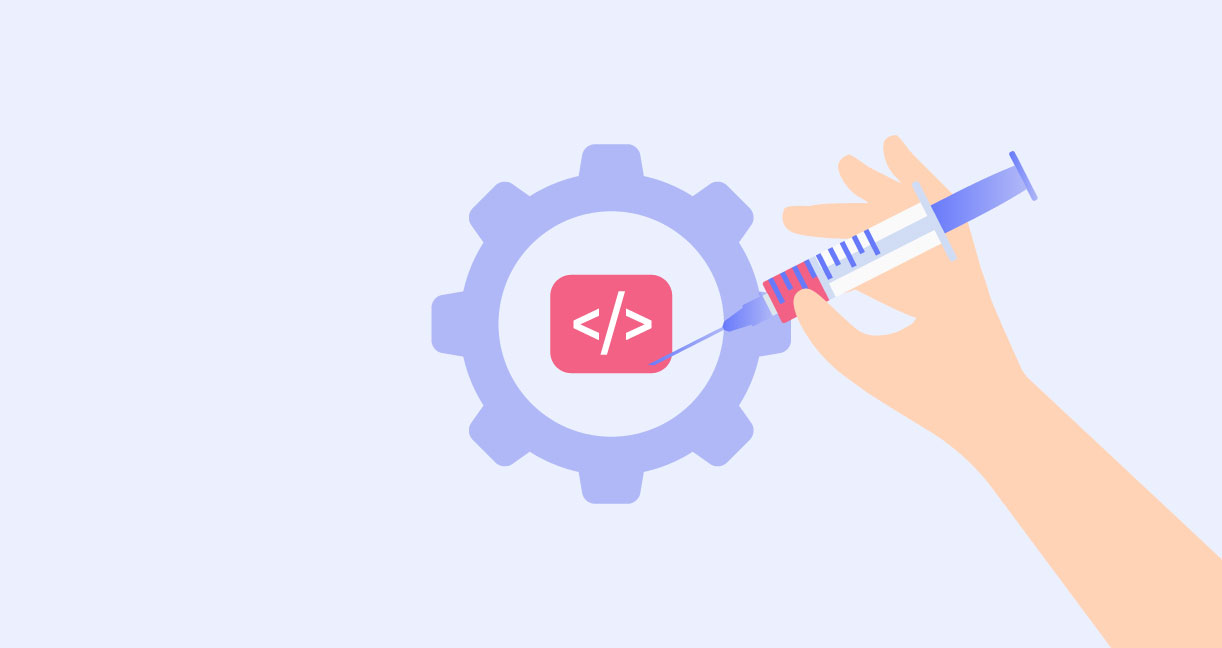


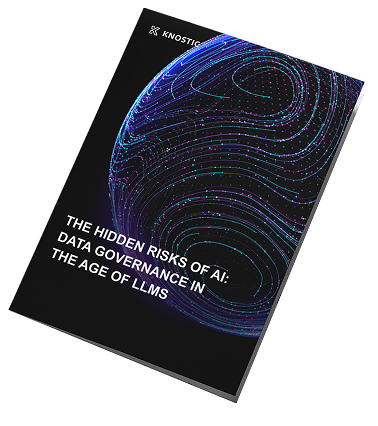
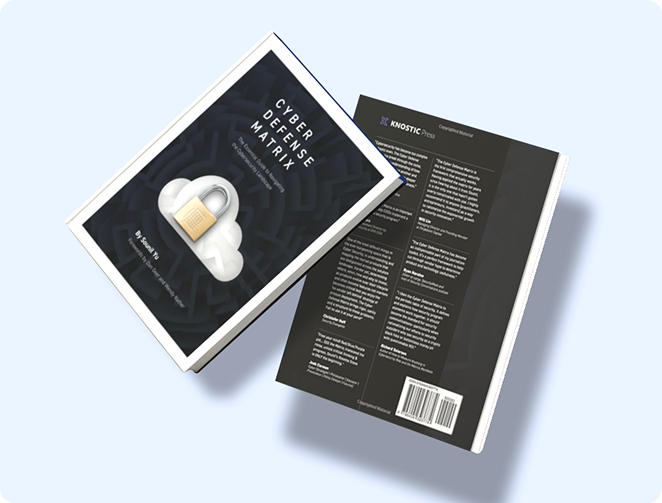
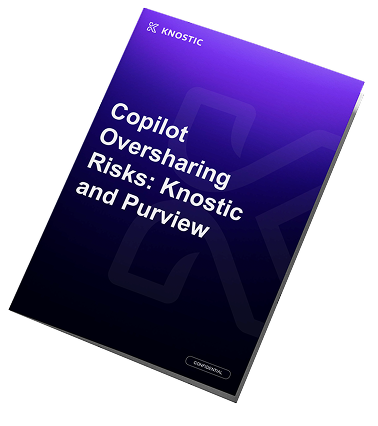

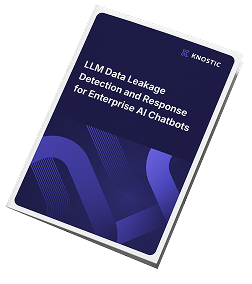

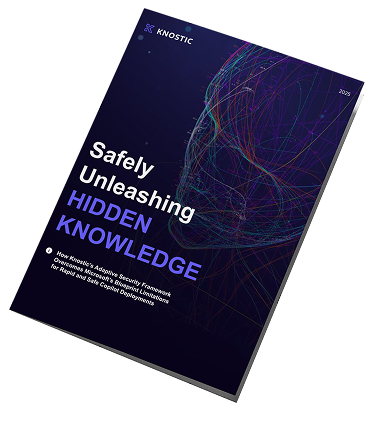



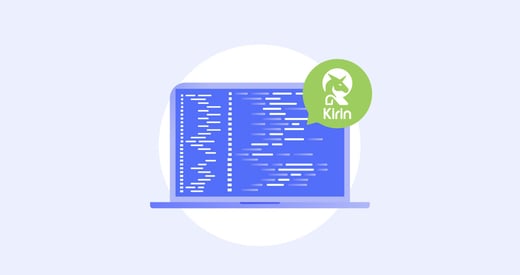
.jpg?width=520&height=294&name=Data-security-posture-management-(DSPM).jpg)


